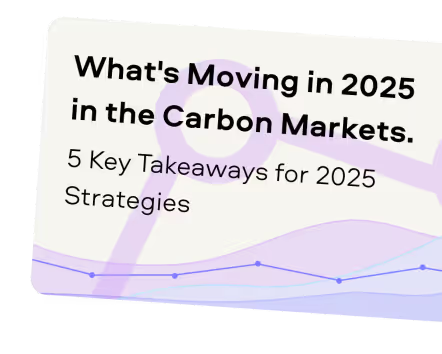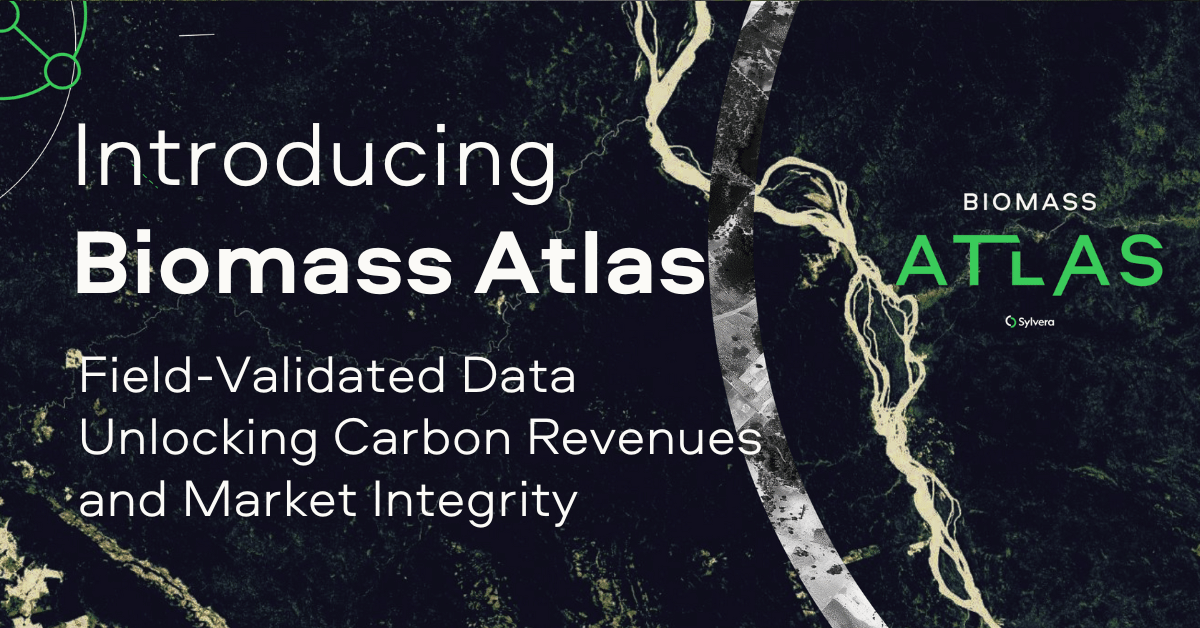“Over the years we’ve invested significantly in our field data team - focusing on producing trusted ratings. While this ensures the accuracy of our Ratings, it doesn’t allow the scale across the thousands of projects that buyers are considering.”
For more information on carbon credit procurement trends, read our "Key Takeaways for 2025" article. We share five, data-backed tips to improve your procurement strategy.

One more thing: Connect to Supply customers also get access to the rest of Sylvera's tools. That means you can easily see project ratings and evaluate an individual project's strengths, procure quality carbon credits, and even monitor project activity (particularly if you’ve invested at the pre-issuance stage.)
Book a free demo of Sylvera to see our platform's procurement and reporting features in action.
Carbon Dioxide Removal (CDR) is moving from concept to reality. Over the past five years, hundreds of pilot projects have tested new technologies and business models, laying the foundation for the next critical stage: scaling from tonnes to thousands, and ultimately millions, of tonnes of CO₂ removed per year.
The leap from pilot to commercial deployment is rarely smooth, but the lessons emerging across pathways offer a clear picture of what it takes to scale durable carbon removal.
With COP30 fast approaching, and CDR capacity needing to accelerate rapidly, Sylvera brings a unique perspective on how the market is evolving.
Why the Scale-Up Challenge Matters
For many CDR pathways such as direct air capture (DAC), biochar, enhanced weathering, and BECCS, the underlying science is increasingly proven. The next bottleneck now lies in economics, financing, and operations. Pilots demonstrate feasibility, but large-scale deployment requires entirely different capabilities: reliable feedstock supply chains, significant capital, robust MRV, and long-term buyer confidence.
Lessons from the Field
1. Direct Air Capture
A DAC pilot is typically defined as a plant that captures between 1,000 and 5,000 tonnes per year. At this scale, technology optimization is the focus: improving sorbents, reducing energy demand, and validating capture efficiency. These plants can often be built for under $5m and funded through venture capital, serving as proof points.
Scaling to commercial plants is another challenge entirely. Massive energy infrastructure needs, workforce development, and intricate supply chains all come into play. Innovators like 1PointFive are addressing this by building their own solar farms and leveraging policy incentives.
The next generation of DAC builders may not have that level of backing, so in our view they face 2 choices; route 1: modularity, simplified supply chains, and co-locating with abundant clean energy or route 2: focus on technology development and licence the tech to large infrastructure players who have that experience.
Lesson: Scale requires infrastructure integration and long-term policy support, not just technical breakthroughs.
2. Biochar
Biochar production is relatively low-tech compared to DAC, but scaling from 2,000 to 20,000 or from 20,000 to 60,000 tonnes of carbon credits per year presents real barriers. These include consistent feedstock sourcing, reliable offtakes, and robust MRV.
A biochar project delivering 20,000 tCO₂ credits annually may need to handle as much as 70,000 tonnes of wet biomass per year. Storing, drying, and ensuring the integrity of that biomass requires major logistical capabilities. The same is true downstream. While pilots may work closely with farmers or construction businesses to oversee application, at commercial scale projects must implement stringent MRV systems across many partners.
Lesson: Standardisation and modularity are key to unlocking scale.
3. Enhanced Weathering: From lab to landscape
Field trials of spreading crushed minerals on farmland or coastlines are expanding quickly. The science is promising, but scale will be dictated by logistics: sourcing suitable feedstocks, grinding them fine enough to react, transporting heavy material at reasonable cost, and applying it across large areas.
These costs rise quickly with distance or if milling infrastructure needs to be built, so projects will depend on strong partnerships with mines and agricultural operators. MRV is another hurdle. Current approaches are expensive and sampling-intensive, which makes scaling difficult. Over time, the shift to model-based MRV and integration with farm data will be essential to keep costs manageable while maintaining credibility.
Lesson: Scale depends on cost-effective logistics, trusted MRV, and partnerships that align supply, land, and science.
4. BECCS: From co-benefits to infrastructure lock-in
Bioenergy with carbon capture and storage (BECCS) offers one of the clearest paths to gigaton scale, since pulp and paper mills or biomass plants can be retrofitted. The barriers lie in securing sustainable feedstocks and reliable storage. Biomass supply chains are already under pressure from energy, pulp, and agricultural markets, and large-scale BECCS risks intensifying that competition.
Even when feedstocks are available, projects need access to geological storage and the pipelines to reach it, both of which are unevenly distributed and slow to permit. Governments in the UK and Nordics are testing CfD-style contracts to reduce revenue risk, but without this type of policy support, financing remains a challenge despite strong buyer demand.
Lesson: Scale relies on reliable feedstocks, accessible storage, and policy-backed revenue certainty.
Common Barriers Across Pathways
- Financing gaps: Offtake agreements alone rarely unlock debt financing. Blended finance models, insurance products, and ratings are beginning to bridge this gap.
- Infrastructure dependence: From pipelines for CO₂ storage to renewable power for DAC, many projects depend on parallel system buildouts.
- Standards and policy: Clearer alignment between voluntary standards such as SBTi and compliance frameworks is critical for buyer confidence.
- Operational complexity: Most CDR companies are still startups navigating complex supply chains and logistics, making partnerships crucial.
How Innovators Are Overcoming Barriers
- Pre-commitment from buyers like Microsoft, Frontier, and BCG provides demand signals that justify scale-up.
- Policy support such as 45Q, the EU CRCF, and UK GGR Business Models offers predictable revenue streams.
- Third-party assessments and ratings reduce perceived risk for financiers and buyers.
- Ecosystem collaboration among developers, registries, insurers, financiers, and policymakers ensures scale with credibility and resilience.
Looking Ahead
One important lesson is not to build too early. Some pathways need to find their feet first, refining methods and standards before scaling, so they can grow with integrity rather than rushing to capacity that cannot be verified or sustained.
Scaling CDR is no longer a distant ambition, it is already underway. The coming decade will see a handful of pilot projects evolve into large-scale plants capable of millions of tonnes per year. The lessons are clear: scale is about more than science. It requires aligned incentives, credible standards, resilient infrastructure, and early risk-takers willing to back projects before they are mature.
For innovators, the challenge is daunting, but the opportunity is historic: to build the backbone of a net-zero future.
If you're a CDR developer, buyer or investor, why not join our upcoming CDR drinks, as part of the Carbon Unbound Europe week?










.jpg)





